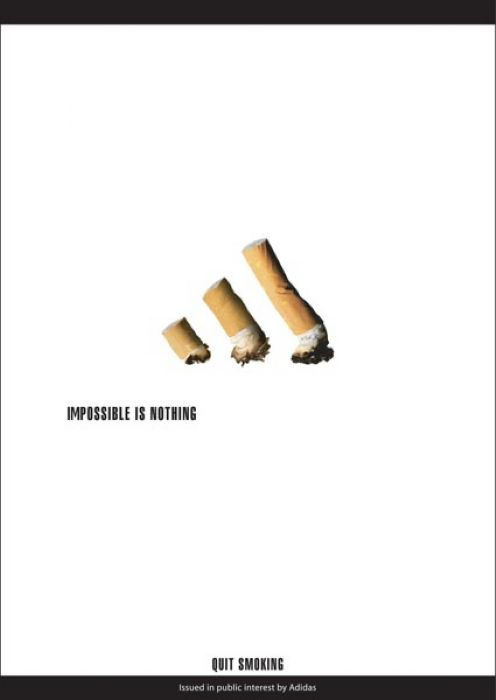 |
| Issued in public interest by Adidas |
I quit smoking 10 years ago this week. I thought it was impossible. It wasn't BUT it was the hardest thing I have ever done. After that everything else is easy. Watch out world!
Smoking cessation timeline – the health benefits over time
In 20 minutes, your blood pressure and pulse rate decrease, and the body temperature of your hands and feet increase.Carbon monoxide in cigarette smoke reduces the blood’s ability to carry oxygen.
At 8 hours, the carbon monoxide level in your blood decreases to normal. With the decrease in carbon monoxide, your blood oxygen level increases to normal.
At 24 hours, your risk of having a heart attack decreases.
At 48 hours, nerve endings start to regrow and the ability to smell and taste is enhanced.
Between 2 weeks and 3 months, your circulation improves, walking becomes easier and you don’t cough or wheeze as often. Phlegm production decreases. Within several months, you have significant improvement in lung function.
In 1 to 9 months, coughs, sinus congestion, fatigue and shortness of breath decrease as you continue to see significant improvement in lung function. Cilia, tiny hair-like structures that move mucus out of the lungs, regain normal function.
In 1 year, risk of coronary heart disease and heart attack is reduced to half that of a smoker.
Between 5 and 15 years after quitting, your risk of having a stroke returns to that of a non-smoker.
In 10 years, your risk of lung cancer drops. Additionally, your risk of cancer of the mouth, throat, esophagus, bladder, kidney and pancreas decrease. Even after a decade of not smoking however, your risk of lung cancer remains higher than in people who have never smoked. Your risk of ulcer also decreases.
In 15 years, your risk of coronary heart disease and heart attack in similar to that of people who have never smoked. The risk of death returns to nearly the level of a non-smoker.
http://www.highlighthealth.com/cancer/smoking-cessation-timeline-what-happens-when-you-quit/

No comments:
Post a Comment